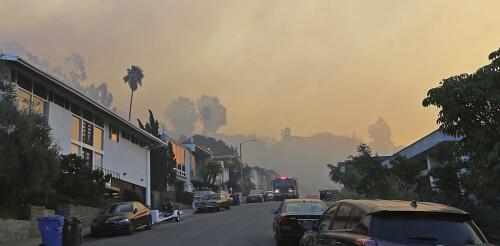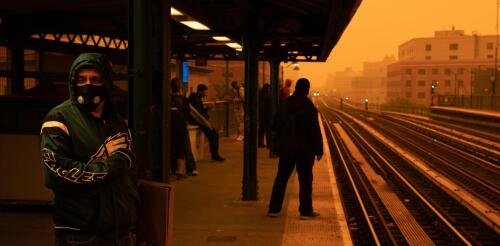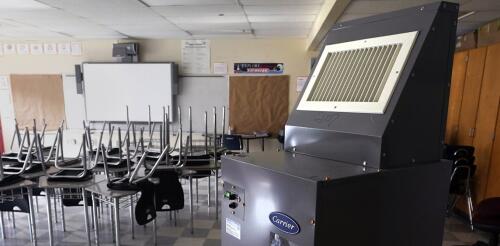Air quality
When wildfire smoke turns the air brown and hazy, you might think about heading indoors with the windows closed, running an air purifier or even wearing a mask. These are all good strategies to reduce exposure to the particles in wildfire smoke, but smoky air is also filled with potentially harmful gases. Those gases can get into buildings and remain in the walls and floors for weeks. Getting rid of these gases isn’t as simple as turning on an air purifier or opening a window on a clear day. In a new study published in the journal Science Advances, colleagues and I tracked the life of these gases in a home exposed to wildfire smoke. We also found that the best way to get rid of the risk is among the simplest: start cleaning. The challenge of smoke particles and gases In December 2021, several of my friends and colleagues were affected by the Marshall Fire that burned about 1,000 homes in Boulder County, Colorado. The “lucky” ones, whose homes were still stand...
Canada’s seemingly endless wildfires in 2023 introduced millions of people across North America to the health hazards of wildfire smoke. While Western states have contended with smoky fire seasons for years, the air quality alerts across the U.S. Midwest and Northeast this summer reached levels never seen there before. The smoke left the air so unhealthy in Philadelphia on June 7, 2023, that the Phillies-Detroit Tigers Major League Baseball game was postponed. That same week, New York City residents hunkered down indoors for several days as a smoky haze hung over the city, turning the skies orange and exposing millions of people to the worst air quality in the world. Smoke also drifted into the Midwest, triggering the highest air quality index levels in the Chicago area in at least 24 years, forcing the cancellation of numerous summer activities and leaving residents with raspy voices. In several states, people woke up to smoky skies day after day....
Wildfire smoke from Canada’s extreme fire season has left a lot of people thinking about air quality and wondering what to expect in the days ahead. All air contains gaseous compounds and small particles. But as air quality gets worse, these gases and particles can trigger asthma and exacerbate heart and respiratory problems as they enter the nose, throat and lungs and even circulate in the bloodstream. When wildfire smoke turned New York City’s skies orange in early June 2023, emergency room visits for asthma doubled. In most cities, it’s easy to find a daily air quality index score that tells you when the air is considered unhealthy or even hazardous. However, predicting air quality in the days ahead isn’t so simple. I work on air quality forecasting as a professor of civil and environmental engineering. Artificial intelligence has improved these forecasts, but research shows it’s much more useful when paired with traditional techniques. HereR...
Smoke from more than 100 wildfires burning across Canada has been rolling into North American cities far from the flames. New York City, Denver, Chicago, Minneapolis and Detroit each made the list of the most polluted cities in the world at times in May and June 2023 because of the fires. The smoke has triggered air quality alerts in several states. We asked Chris Migliaccio, a toxicologist at the University of Montana who studies the impact of wildfire smoke on human health, about the health risks people can face when smoke blows in from distant wildfires. What’s in wildfire smoke that’s a problem? When we talk about air quality, we often talk about PM2.5. That’s particulate matter 2.5 microns or smaller – small enough that it can travel deep into the lungs. Exposure to PM2.5 from smoke or other air pollution, such as vehicle emissions, can exacerbate health conditions like asthma and reduce lung function in ways that can worsen existing respiratory pr...
As fall temperatures cool across the U.S., many schools will struggle to ventilate classrooms while also keeping students and teachers comfortable and healthy. Children and teachers spend over six hours a day in classrooms during the school year, often in buildings that are decades old and have inadequate heating, ventilation and air conditioning, or HVAC, systems. Fall 2022 marks the start of the fourth school year affected by the COVID-19 pandemic, which has spotlighted the importance of indoor air quality in schools. Ideally, all school buildings would have adequate ventilation, filtered air in each classroom and windows that open. Sadly, this is not the case – and indoor air quality in many schools is poor as a result. This is especially problematic in the wake of the U.S. Centers for Disease Control and Prevention’s August 2022 COVID-19 guidance for schools, which scales back other measures for limiting transmission, such as masking, testing and quarantining. B...




